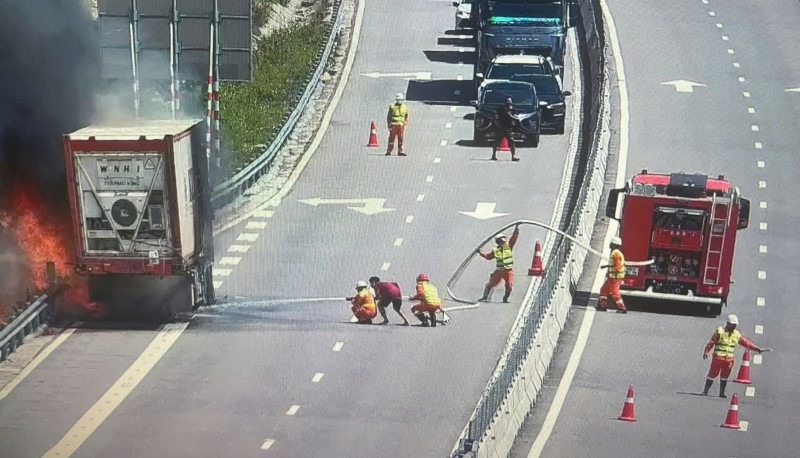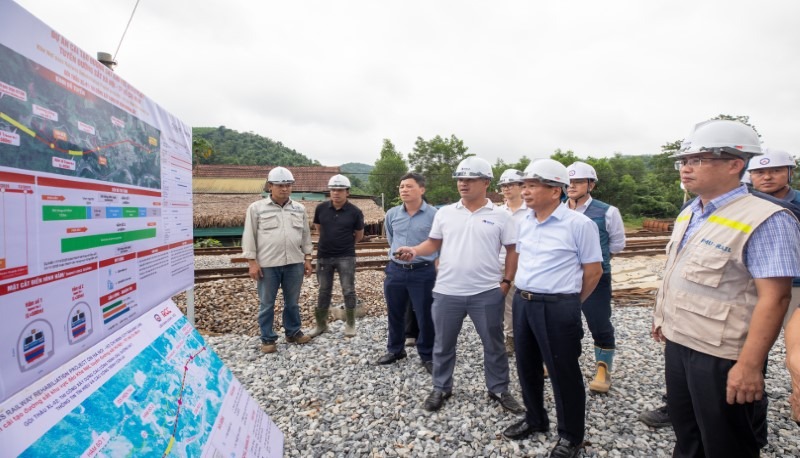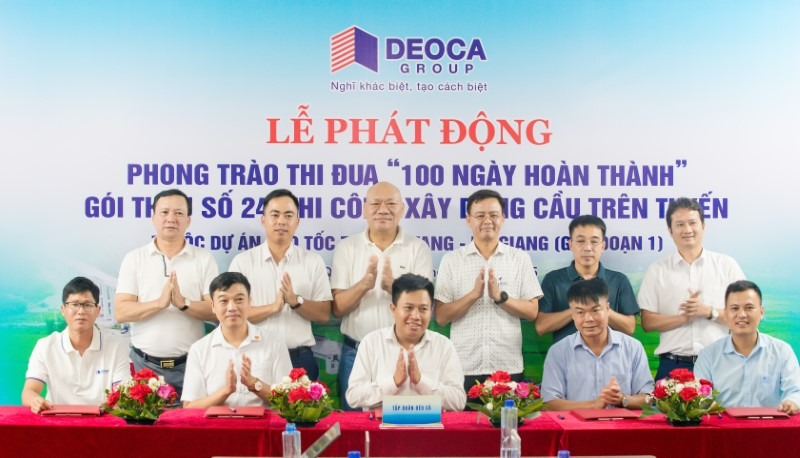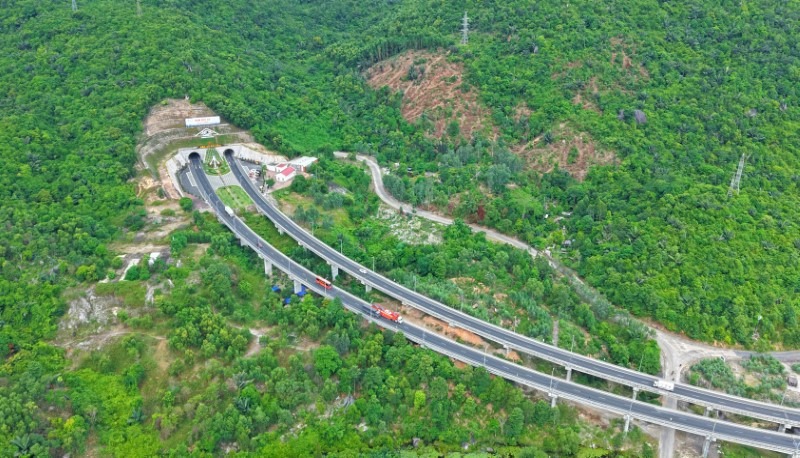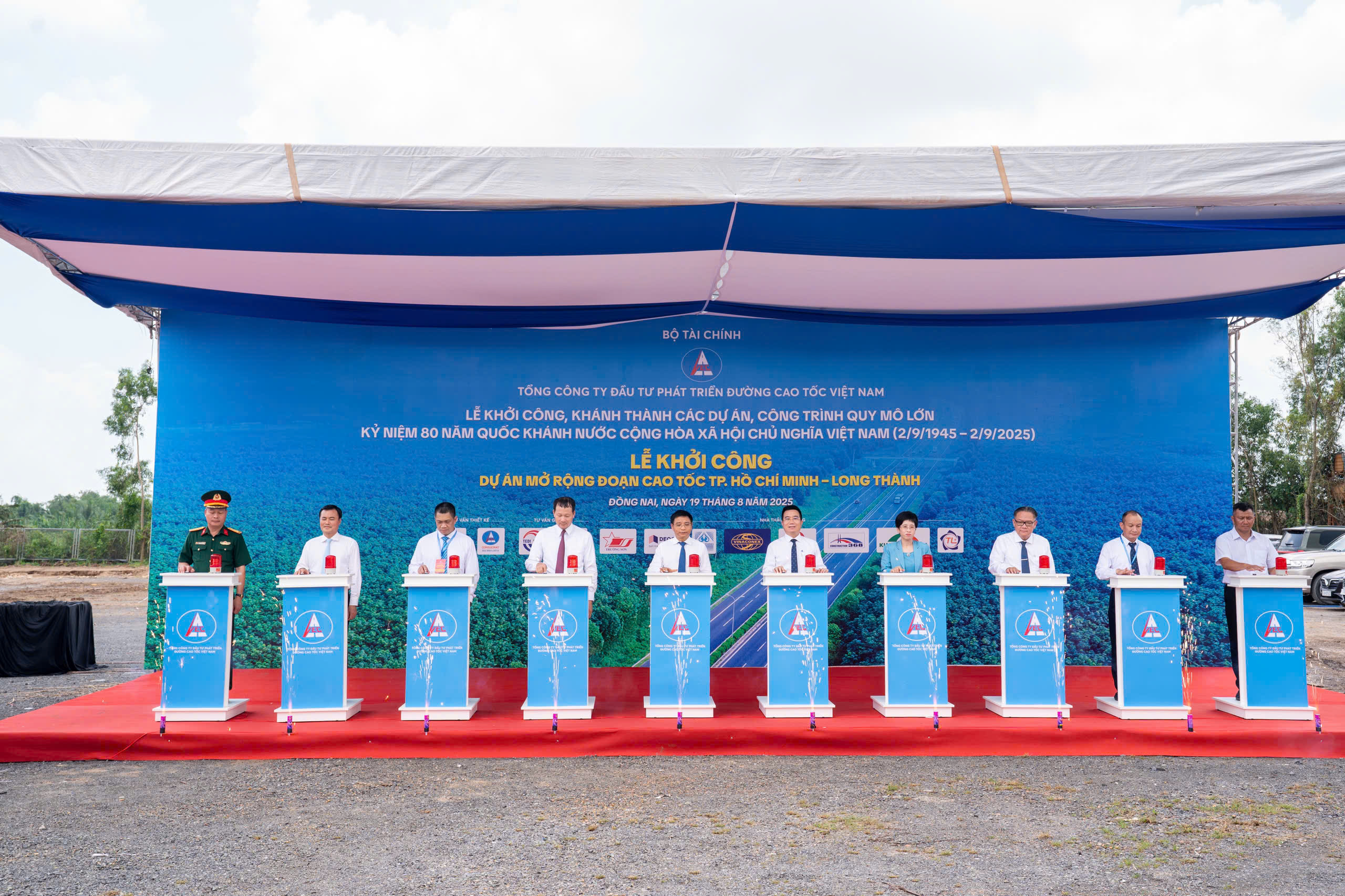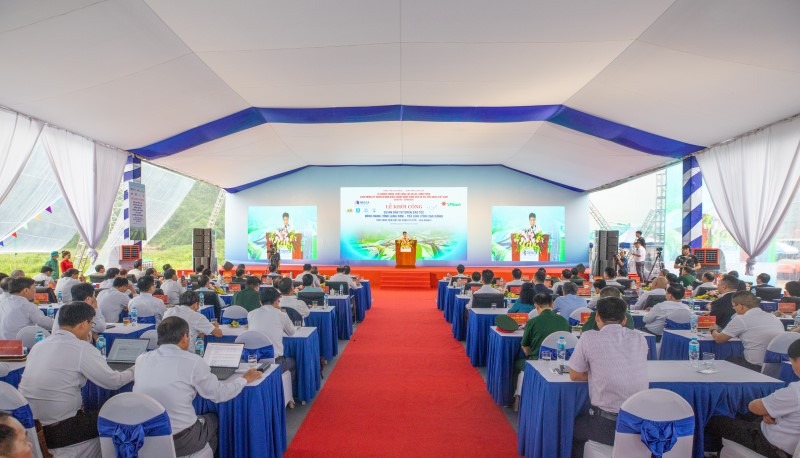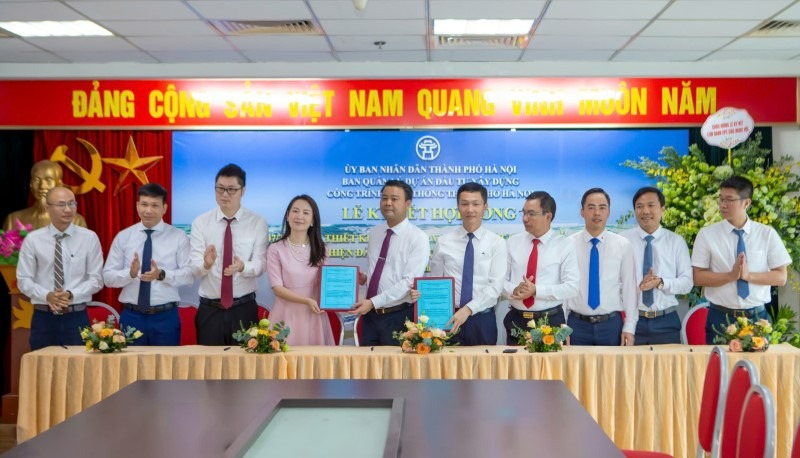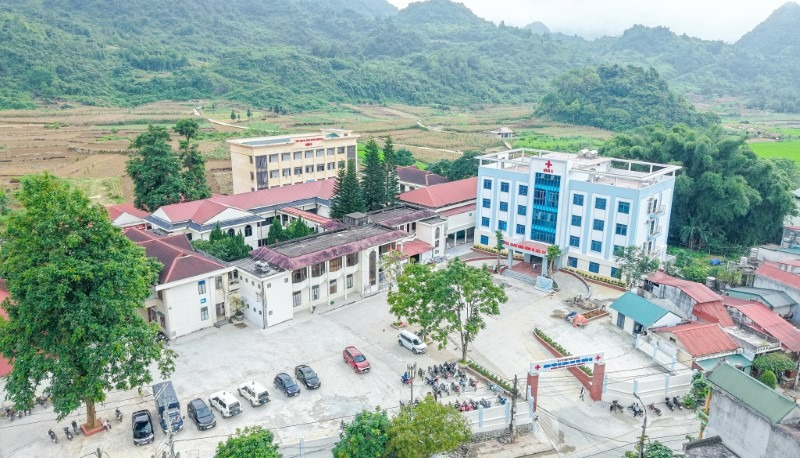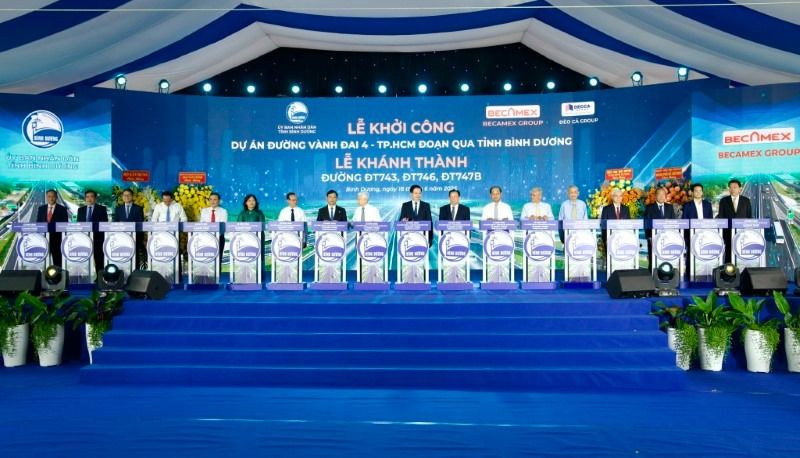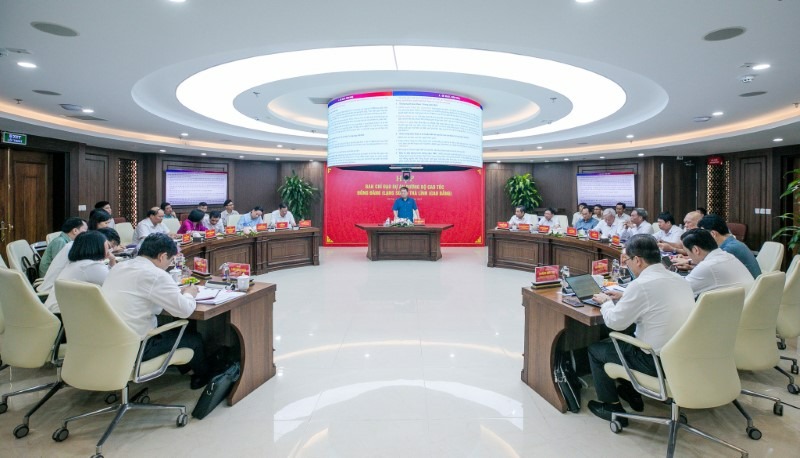Deo Ca Tunnel - one of those cross-mountain traffic projects, has been operating for nearly seven years like a "coincidence" and serves people's travel every day. However, only some know how to overcome the challenges to create this project.
Two problems must be resolved to penetrate Dai Lanh range
Since 2000, Vietnam has conquered dangerous passes on the North-South natural road, starting with the 6.28 km long Hai Van Tunnel. After nearly 5 years of construction, Hai Van tunnel was inaugurated in June 2005. The total cost for the entire project is more than 127 million USD from Japanese loans.
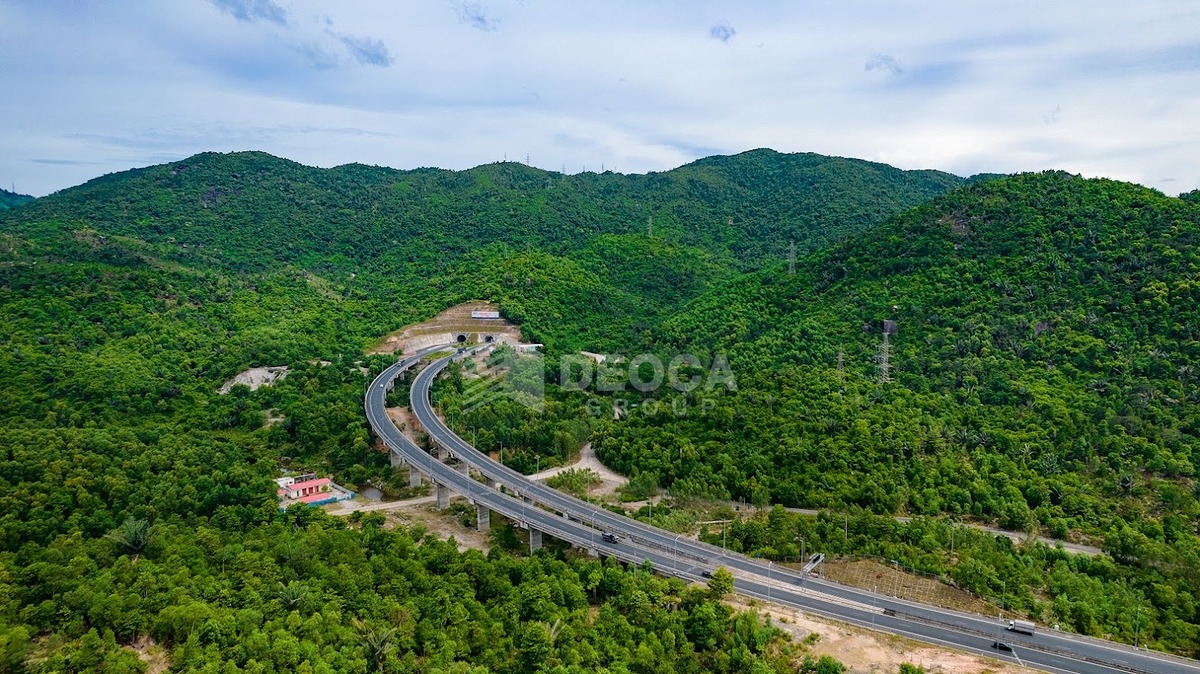
Panoramic view of the road tunnel project via Deo Ca.
When starting this project, the responsible people in Phu Yen, Binh Dinh, Khanh Hoa, and the leaders of the Ministry of Transport considered the need for other tunnels along the main traffic axis, the National Highway 1A circuit. The idea of a tunnel through Ca Pass was also sparked from there.
After 17 years, when Deo Ca tunnel, along with the Co Ma and Cu Mong tunnels, brought clear benefits to society, those responsible at the Ministry of Transport and in the locality all shared the same thing: That day they spoke up in support of these steps. The first move of Deo Ca tunnel project is based on the feelings and beliefs of the proponent's bravery and enthusiasm, as well as the persuasiveness of the investment plan.
Thousands of detailed solutions come together to solve two big problems: Technique, technology and intelligence, financial solutions.
How is Deo Ca tunnel optimized?
A foreign country designed and constructed Hai Van tunnel, which became a "symbol" of conquering mountain passes on Vietnam's National Highway 1A. If Vietnamese people could make their own Deo Ca tunnel in the same manner and design as Hai Van tunnel, it would be a step forward.
If it goes that way, Deo Ca tunnel will only have one main tunnel operating traffic in two directions and one emergency exit tunnel. The second pipeline will be built later, it is estimated to take about 10 - 20 years, depending on when vehicle traffic reaches 20,000 vehicles/day. Shorter construction time and lower initial investment costs are the advantages of this option. Doing so is also "easiest" in the immediate future to get approval and is much more convenient in receiving design and construction experience from lessons learned in Hai Van.
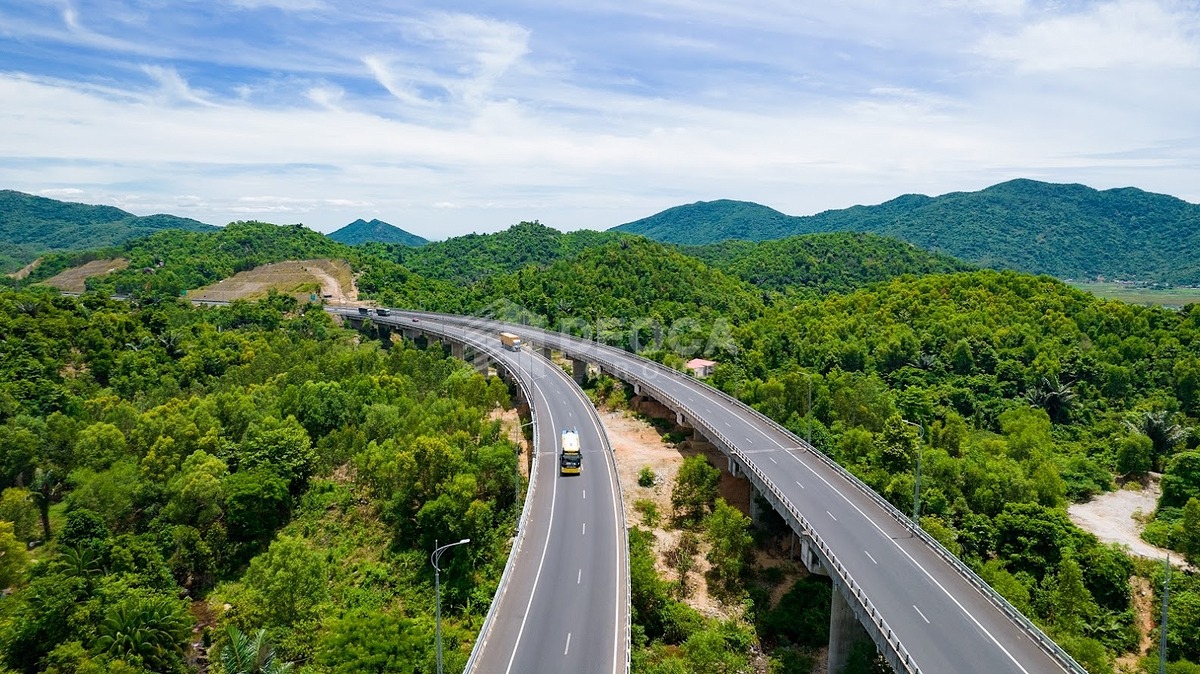
Tunnel project path via Deo Ca.
But Deo Ca tunnel workers showed "different" thinking. They do not see Van Tunnel as a "symbol" to "copy" but see it as an object to study. The goal is to see and apply the advantages, more importantly, to evaluate the disadvantages to research and overcome them thoroughly.
Research shows that because Hai Van tunnel uses one tunnel for two traffic lanes, the maximum speed only reaches 70km/h, which is not suitable for the required higher speed according to the general planning of the Government North-South expressway system. Also because of the two-way circulation, the amount of wind is enormous, leading to the need to handle ventilation, eliminate engine emissions with an electrostatic precipitator system and toxic gas suction system, supplying fresh air with straight pipes from the top of the mountain. Operating costs for this system are extremely expensive, including electricity and maintenance of the "huge" equipment system during operation.
As a result, the new design plan for Deo Ca tunnel proposes two parallel tunnels, each facilitating one-way traffic, thereby creating ventilation in the form of a piston running in a cylinder. This design eliminates wind and significantly reduces the cost of constructing the ventilation system. Moreover, it is projected to enhance safety, minimize tunnel operating costs by up to 40%, and increase traffic speed to 80km/h. The cost of building a rescue system is also substantially reduced, as this tunnel serves as the rescue route for the other tunnel, interconnected by openings in the event of an incident.
Upon completing the Deo Ca tunnel, DEOCA investor was entrusted with implementing Hai Van 2 tunnel, based on this innovative design plan. In January 2021, when the remaining tunnel tube is completed, the Hai Van tunnel will officially be recognized as a fully realized tunnel project.
Deo Ca tunnel project, approved by the Ministry of Transport in 2012 as BOT and BT, stands out for its unique approach. In 2013, the investor re-surveyed the alignment to avoid complications, faults, and overlaps in terrain and geological tectonics. This innovative step made the project more reasonable, reducing the cost of reinforcing the tunnel's foundation and ceiling, and shortening the length by nearly 1km. The investment costs until project completion are 11,378 billion VND, a decrease of 4,225 billion VND, equivalent to 28% of the cost savings. Many projects incur costs during construction, leading to an "overflow" of investment capital. Deo Ca tunnel project is the opposite - tunnel project is the opposite - an outstanding difference in the reality of investment and construction of transport infrastructure in Vietnam. The enterprise continues to promote and create a "different" mark on future projects, typically: - Successfully "rescued" Trung Luong - My Thuan expressway and Bac Giang - Lang Son expressway with "record" progress. - Save nearly 1,000 billion VND for Cam Lam - Vinh Hao expressway e-commerce, along with many innovations to overcome difficulties during the investment and construction process to bring the project into the traffic artery in April 2024. - Reduce e-commerce for the Dong Dang—Tra Linh expressway project from 47,000 billion VND to 23,000 billion VND; introduce an investment phasing plan with phase 1 of 14,000 billion VND. |
TT


